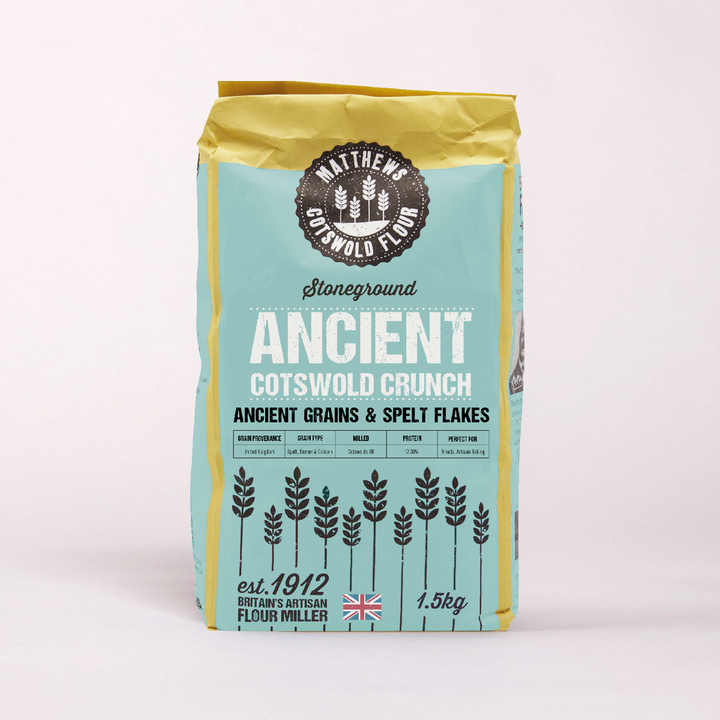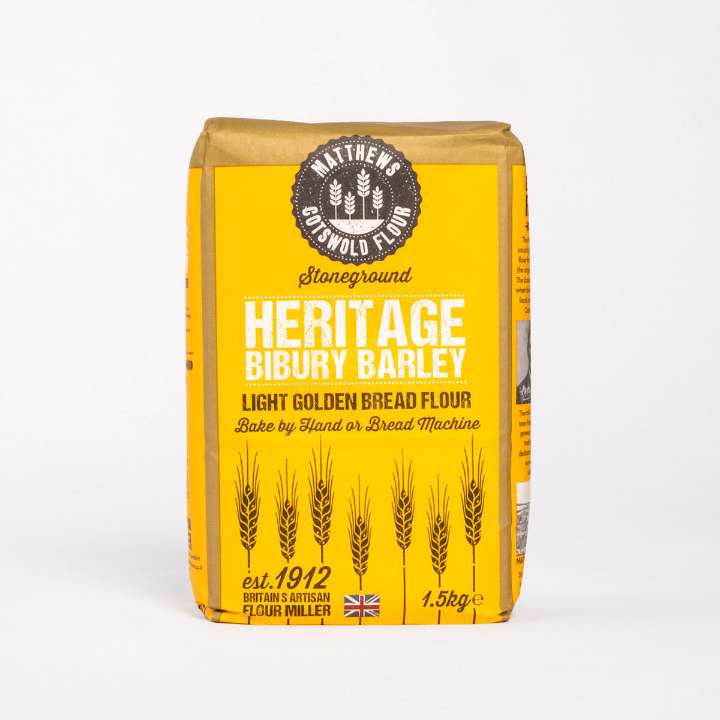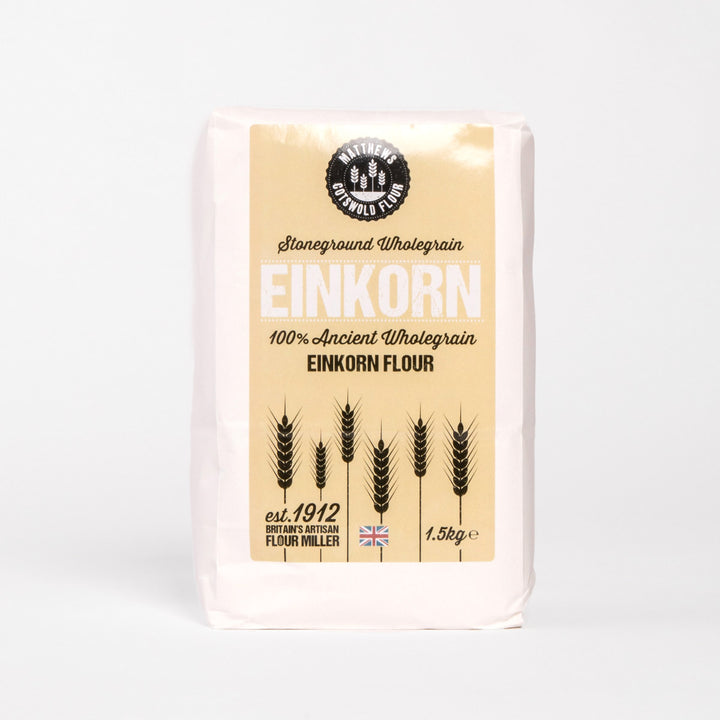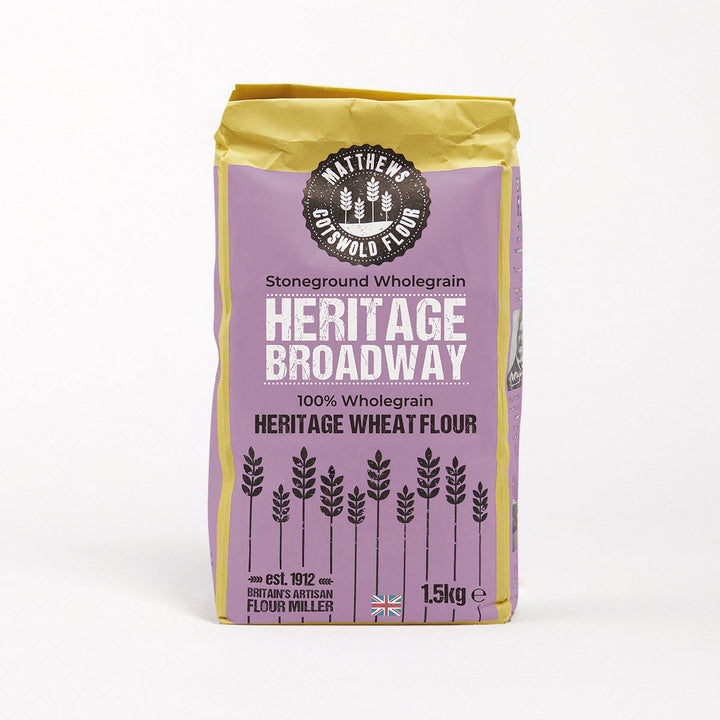Bringing in the Cotswold harvest!
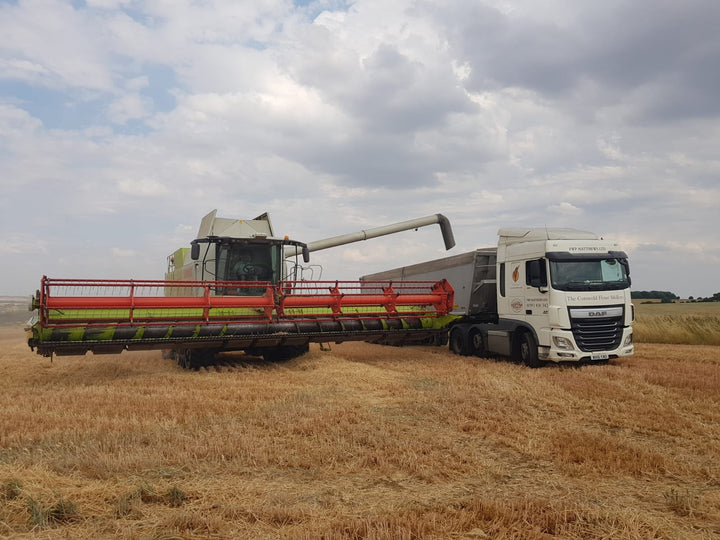
I wanted to be there as the first wheat harvest came in this year.
It was a month ago, standing on the top of the Evenlode valley looking towards our mill, that I had a cheeky wager with my friend. We bet on when we’d see the farmer’s combine harvester making those tell-tale tracks in those fields of gold, as the Sting classic says. (Yes, I know it’s a song about barley but the same applies!)
I won because I could see that although the stalks were shorter than usual, the grain was nearly good to go. It wouldn’t be growing much taller and the harvesting would be starting very soon.
It’s been the hottest summer and earliest harvest since my father was my age (yes that’s 40 years ago!) and the largest wheat growing regions across the world have all been affected by epic heatwaves. Russia, Australia, Germany and the UK are all seeing output down by 15 or 20 per cent, due to the heat. Our little corner of the Cotswolds will be the same.
Sun = Great for protein / Bad for wheat output
Although the extra sunlight and dry conditions have torched our lawns, it’s actually very good for the quality of wheat as it gives it a higher protein content, is a key quality we look for as millers. Sunlight means more protein in the grain, which means better gluten in the flour, allowing for a better rise.
Why is a high protein grain important in bread making?
A higher protein content is perfect for bread making. Essentially, a protein-rich wheat and the flour it makes helps the loaf to rise.
Glutenin and gliadin are two simple proteins naturally present in wheat kernels and subsequently the flour. During the baking process, these proteins are activated by the addition of water to form gluten.
The higher the concentration of simple proteins, the stronger the gluten bonds. These gluten bonds influence the cell structure, also known as the ‘crumb’, of the bread and its ability to rise from yeast activity.
Our local Cotswold wheat harvest
To be there at the start of the harvest, I met up with local farmer David from the Swinbrook estate.
It’s a big moment when you first test the grain to see what the quality is like. We stood together in the field, all the elements ready to go: the farmer, the combine harvester, tractor and trailers, and the millers…
If the harvest is lower quality, in terms of protein levels, the boys in the tractor will take the grain to the farm for wheat feed. The wheat will be good for feeding cattle and livestock, but not good enough to make our flour.
If the harvest is good quality, with high protein levels, it’ll be good enough to make a quality flour. It can come straight down to us at the mill, and make its way through the stone mills…
So, while we all watch, the combine harvester drops its head, revs up and makes its way towards us. The first strip of the first harvest is underway. I see the expert in milling wheat (my Dad, Paul) walk towards the harvester, take a sample and go back down the hill to the testing laboratory at our mill, half a mile away.
Paul doesn’t have long to go through the full set of tests. The harvester will soon fill up and have to off-load its precious wheat stocks, which could be sent either to the farm or to us…
The race is on, the harvester is about to drop its first load when Paul can be seen coming up the hill.
There is an anxious pause as David the farmer and I wait in the field for Paul to walk over, holding a white piece of paper with the lab test results. (Why he still doesn’t send a text message is beyond me, I think he likes the dramatic effect)
It’s good news, the protein quality is high! This is a win/win situation for all of us. David the farmer gets a higher milling wheat price and can enjoy his toast tomorrow at home, secure in the knowledge that his wheat can come to us and be made into flour.
And we are happy because we’ve secured a great source of high protein wheat grain, from the most local possible source in the Cotswolds.
From the field to the mill in under five miles
So, with protein high and a good bushel weight, the order is given and the harvester turns towards the Matthews trailer, which is ready to take its first quality wheat payload.
Up and down the combine harvester goes, at the end of each run unloading straight into our trailer. Once full, it’s a two-minute drive to the mill.
After being conditioned for 24 hours the wheat then goes through the mill and the stones and is ground into flour. The finished product is a fine quality flour, produced from Cotswold wheat grown less than a mile away from our mill, which is ready to be baked into a beautiful Cotswold Crunch loaf.
← Older Post Newer Post →





